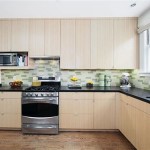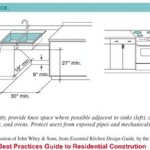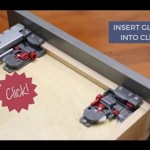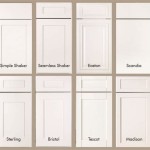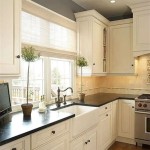Replacing Exposed Hinges on Kitchen Cabinets: A Comprehensive Guide
Exposed hinges on kitchen cabinets, a common feature in older homes and more budget-friendly designs, often detract from the overall aesthetic appeal of a modern kitchen. These hinges, while functional, can appear dated and may suffer from wear and tear over time. Replacing these hinges with concealed or soft-close options can significantly enhance the look and functionality of kitchen cabinetry. This article provides a comprehensive guide on replacing exposed hinges on kitchen cabinets, covering the necessary preparations, the replacement process, and considerations for choosing the right concealed hinges.
Assessing the Existing Hinges and Cabinetry
Before commencing the replacement process, a thorough assessment of the existing hinges and cabinetry is crucial. This assessment determines the type of exposed hinge currently in use and the compatibility of the cabinet construction with concealed hinges. Exposed hinges typically come in two primary types: partial wrap and full wrap. Partial wrap hinges attach to the cabinet door and only partially wrap around the cabinet frame, while full wrap hinges completely wrap around the frame. Identifying the existing hinge type is essential for selecting the appropriate replacement.
The cabinet construction also plays a significant role. Face-frame cabinets, characterized by a frame surrounding the cabinet opening, generally offer more straightforward hinge replacement options. Frameless cabinets, also known as European-style cabinets, lack this frame. Installing concealed hinges on frameless cabinets may require more precise measurements and potentially the use of adapter plates.
Furthermore, the condition of the cabinet doors and frames should be inspected. Any damage, such as cracks or splitting, may require repair before installing new hinges. Loose screws or stripped screw holes in the existing hinge locations can be addressed with wood filler or toothpicks inserted into the holes to provide a more secure grip for the new screws.
Gathering the Necessary Tools and Materials
A successful hinge replacement necessitates the right tools and materials. The following list outlines essential items required for this project:
*New Concealed Hinges:
Select hinges that are compatible with the cabinet type (face-frame or frameless) and offer desirable features such as soft-close functionality. *Screwdriver:
A standard screwdriver (Phillips head or flathead, depending on the screw type used by the hinges) is necessary for removing the old hinges and installing the new ones. A power screwdriver can expedite the process. *Drill:
A drill with various drill bits is essential for creating pilot holes for screws, particularly when working with hardwood cabinets. A drill is also needed for creating the necessary cup holes for concealed hinges. *Measuring Tape:
Precise measurements are crucial for ensuring proper hinge placement and alignment. *Pencil:
Used for marking hinge locations and screw hole positions. *Safety Glasses:
Protects the eyes from debris during drilling and screwing. *Wood Filler (Optional):
For repairing any damage to the cabinet doors or frames. *Putty Knife (Optional):
For applying wood filler smoothly. *Cup Hole Saw:
This specialized drill bit creates the recessed cup holes required for concealed hinges to sit flush with the cabinet door. The size of the cup hole saw should match the diameter of the hinge cup. *Hinge Jig (Optional):
A hinge jig can significantly simplify the process of drilling cup holes and aligning the new hinges. It provides a template for accurate drilling and screw placement.The Replacement Process: Step-by-Step Instructions
The replacement process involves several key steps, each requiring attention to detail to ensure a professional and functional result.
1. Removing the Existing Hinges
Begin by carefully removing the screws that secure the existing hinges to the cabinet doors and frames. Use a screwdriver that fits the screw heads snugly to prevent stripping. Store the screws in a safe place, as they may be needed later for adjustments. Once all the screws are removed, gently detach the door from the cabinet frame. Support the door while removing the last screws to prevent it from falling and potentially causing damage.
2. Preparing for Concealed Hinges (Drilling Cup Holes)
Concealed hinges require a recessed cup hole in the cabinet door to accommodate the hinge mechanism. This step requires the use of a cup hole saw and a drill. Determine the appropriate location for the cup holes based on the hinge manufacturer's specifications. Mark the center of the cup hole on the back of the cabinet door. Using the cup hole saw and drill, carefully drill the cup hole to the required depth. Avoid drilling too deep, as this can weaken the door. A drill press, if available, can provide greater accuracy and control during this process. A hinge jig can be extremely helpful in accurately positioning the cup hole saw.
3. Installing the New Concealed Hinges
Position the concealed hinge within the cup hole and align it according to the manufacturer's instructions. Use a pencil to mark the locations for the screw holes. Drill pilot holes at the marked locations to prevent the wood from splitting. Secure the hinge to the cabinet door with the provided screws. Ensure the screws are tightened securely but not overtightened, which could strip the screw holes.
4. Attaching the Door to the Cabinet Frame
Align the cabinet door with the cabinet frame. Position the other half of the concealed hinge against the cabinet frame and mark the screw hole locations. Drill pilot holes at the marked locations. Secure the hinge to the cabinet frame with screws. Again, ensure the screws are tightened securely but not overtightened.
5. Adjusting the Hinges
Concealed hinges typically feature adjustment screws that allow for fine-tuning the door alignment. These screws can be used to adjust the door's vertical position, horizontal position, and depth. Use a screwdriver to adjust the screws until the door is properly aligned with the cabinet frame, leaving consistent gaps around the perimeter of the door. Check that the door opens and closes smoothly and without binding. Re-tighten all screws after completing the adjustments.
Considerations for Choosing Concealed Hinges
Selecting the right concealed hinges is essential for ensuring the longevity and functionality of the cabinet doors. Several factors should be considered when choosing replacement hinges.
Hinge Type and Overlay
Concealed hinges are available in various types, including full overlay, half overlay, and inset. The overlay refers to the amount the door overlaps the cabinet frame. Full overlay hinges are used when the door completely covers the frame, while half overlay hinges are used when the door covers half of the frame. Inset hinges are used when the door sits flush with the face frame. Choosing the correct overlay is crucial for achieving the desired aesthetic.
Soft-Close Functionality
Soft-close hinges are a popular upgrade that prevents cabinet doors from slamming shut. These hinges incorporate a dampening mechanism that slows the door's closing speed, resulting in a gentle and silent closure. Soft-close hinges enhance the user experience and reduce wear and tear on the cabinets.
Hinge Quality and Durability
Invest in high-quality hinges from reputable manufacturers. Cheaper hinges may be less durable and prone to failure, requiring more frequent replacement. Look for hinges made from robust materials such as steel or stainless steel. Consider the weight capacity of the hinges, especially for larger or heavier cabinet doors.

Replacing Cabinet Hinges With Overlay Self Closing The Palette Muse

How To Install Hinges On Cabinets Young House Love

Update Your Kitchen Thinking Hinges Evolution Of Style

Update Your Kitchen Thinking Hinges Evolution Of Style

Concealed And Exposed Cabinet Hinges

Spotlight On Hinges K S Renewal Systems Llc

Update Your Kitchen Thinking Hinges Evolution Of Style

Replacing Outdated Cabinet Hinges The Hardware Hut

How To Install Cabinet Hinges Hymns And Verses

How To Replace Exposed Cabinet Hinges For Ehow
Related Posts

